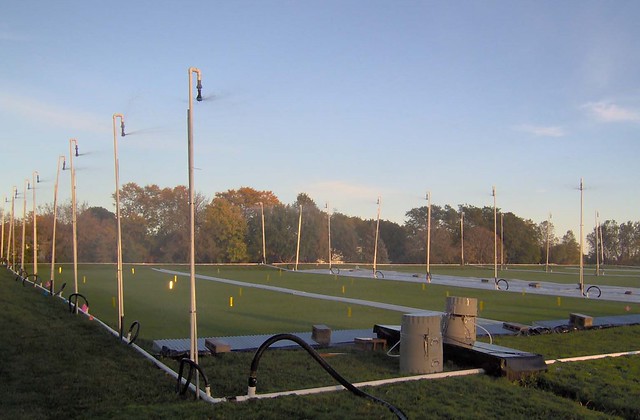
More than 20 million people play golf on the estimated 14,000 golf courses in the United States. As Americans head for the links this year, golf course managers and superintendents know it’s important not only to maintain the greens and fairways, but also to minimize the risk of pesticides and fertilizers flowing into nearby ponds, streams or lakes.
Pamela Rice, a chemist with USDA’s Agricultural Research Service (ARS) in St. Paul, Minnesota, and her colleagues at the University of Minnesota (UMN) are offering clear recommendations to golf course managers and superintendents on how to do exactly that.
The work was partially funded by the 700,000-member U.S. Golf Association (USGA), the sport’s governing body and sponsor of the U.S. Open and other major championships.
Many golf courses are near homes, and golf course managers want to be good neighbors, according to Michael P. Kenna, who oversees the USGA’s turfgrass and environmental research. “Golf courses can be surrounded by hundreds, or even thousands, of people living right alongside them, so it’s important to us that they’re managed in an environmentally friendly way, and that they are not polluting the air or the water,” Kenna said.
Rice and Brian Horgan, a UMN turfgrass expert, compared the effects of two turf management practices on controlling pesticide runoff by simulating rainstorms at a research site on the UMN campus in St. Paul. The site is equipped with sprinklers and gutters that channel runoff into a flume with instruments that allow researchers to control precipitation, measure runoff and collect samples for pesticide analysis.
Two management practices were evaluated: hollow tine core cultivation (HTCC) and “verticutting.” HTCC involves punching holes that are dime-sized, or a bit smaller, into the turf with hollow tubes to aerate it, giving it a Swiss-cheese look. You pull up the soil cores, let them dry out, brush the soil back into the holes and blow away the stray grass, so that the turf is aerated, less compacted, and better able to absorb water.
Verticutting involves running a mower with vertical blades into the turf to lightly penetrate the soil, opening it up for air and water to filter through. Both practices are common for controlling thatch and loosening up the soil to increase infiltration of rainwater. But they are also labor intensive, and golf course managers need to know whether they have any deleterious or beneficial effects on pesticides or fertilizers applied.
The researchers measured concentrations of five different pesticides in the runoff and found that HTCC absorbed more runoff than verticutting and was even superior to the combination of verticutting and HTCC, possibly because verticutting can compact the soil at points where the mower blades cut into it. The message is clear: if you are concerned about pesticide runoff at your golf course, go with HTCC.
The results were published in Science of the Total Environment, and the USGA will disseminate the findings to golf course managers around the country, Kenna says. The findings also may apply to any of the 32,000 golf courses around the world, as well as to athletic fields and other facilities that use managed turfgrasses, Rice says.

